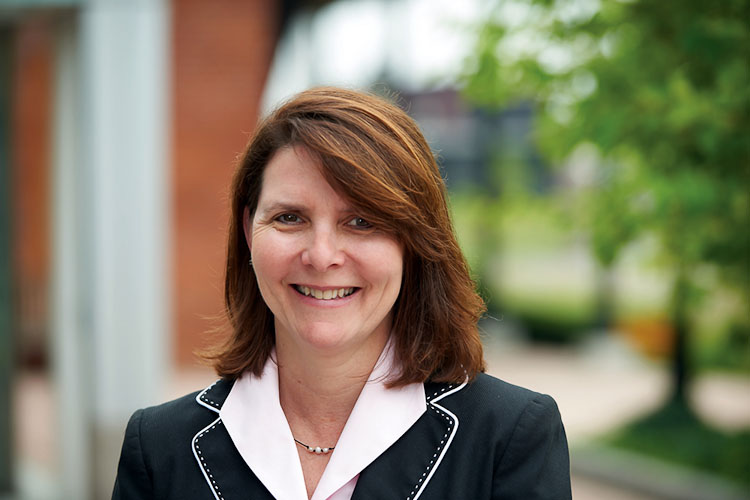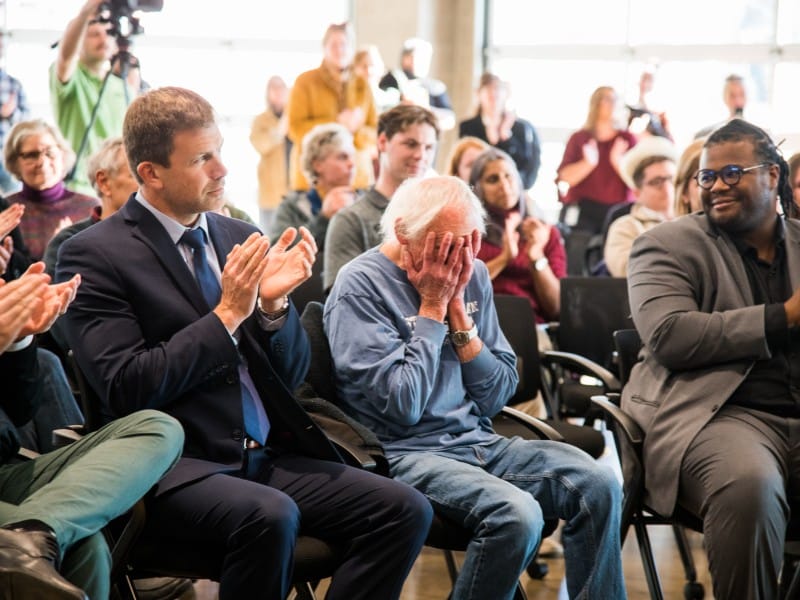Reality check: Why do nonprofits need professional fundraisers?
When the attorney general's recent report came out with warnings about professional fundraisers many in the nonprofit community questioned its findings.
For three decades, people have lined Kalamazoo’s streets for the annual New Year’s Fest, a performing arts festival that this past year drew thousands of people downtown to usher in another turn around the sun with dozens of artists, hours of live music, food trucks, fireworks, and, of course, the ball drop.
It’s one of the most well-known New Year’s celebrations in the state, with the event pulling people from throughout the region and even inspiring Michiganders from the east side of the Mitten to make the trek to Kalamazoo for the end-of-the-year festivities.
Such an occasion isn’t cheap, however, and New Year’s Fest, which itself is a nonprofit, routinely loses money, in part because the organizers want to keep it affordable (tickets are $5 per person) and aim to have the festival be more about placemaking and community-building than about earning dough. Deborah Droppers, who organizes the event, has even shelled out thousands of dollars of her own money to keep the festival running.
None of this information, however, makes its way into Michigan Attorney General Bill Schuette’s recent report on professional fundraisers. Instead, it notes in one line of the report that the group soliciting money for New Year’s Fest lost thousands of dollars. In April, Schuette released his fifth annual “Professional Fundraising Charitable Solicitation Report,” which aims to identify the total amount of money raised by professional fundraisers working to land financial contributions on behalf of charities in Michigan. In the report’s one-page introduction, Schuette’s office explains that the “report is designed not only to help donors make wise decisions with their money but also to encourage charities to enter appropriate fundraising contracts.”
However, the attorney general’s publication has drawn ire from some nonprofit leaders and fundraising professionals in Southwest Michigan, as well as throughout the state, who are calling it a confusing, incomplete and misguided document that unnecessarily casts a shadow over nonprofit fundraising.
And the way the document presents Kalamazoo’s New Year’s Fest is emblematic of a number of problems individuals see in the report.
In the publication, Schuette’s office says that Kalamazoo Experiential Learning Center, a nonprofit for which Droppers serves as the executive director, raised $98,955 for New Year’s Fest but had $112,754 in expenses, which means a loss of $13,799. These are figures that Droppers understands don’t look good on paper but explains exist in order for a community to continue to have the end-of-the-year festival.
“New Year’s Fest has never made money,” Droppers says. “But here’s the choice: Do we not do New Year’s Fest? It’s an amazing event that’s affordable. It’s my pledge and my promise that New Year’s Fest goes on. Somebody has to pay for that, and that somebody is me.”
But, this information about the festival is not presented in the attorney general’s document. Instead, the event exists solely as negative numbers in a report which is led with an introduction that says in 2016, “61 percent of funds raised by professional fundraisers reporting in Michigan went to fundraisers. For context, the Better Business Bureau’s fundraising standard says that fundraising spending should not exceed 35 percent.”
When assessing the report with no outside context, the fact that the Kalamazoo Experiential Learning Center lost money for New Year’s Fest could seem worrisome. Except the event is not a fundraiser. And the nonprofit overseeing the festival isn’t losing money because a professional fundraiser is pocketing too much. Instead, that individual—Droppers—is spending thousands of dollars of her own money to keep it going.
Plus, Droppers wonders, why is the attorney general including an event that’s not meant to be a fundraiser in a report about fundraising at all? That’s certainly not the only question she and others have. Droppers and other leaders from such area organizations as the Kalamazoo Community Foundation, Grand Valley State University, the Association of Fundraising Professionals’ West Michigan chapter, and ONEplace say if Schuette’s office intends to continue to publish annual reports like this, will he change the way he accesses and presents the data in order to give a more complete picture of fundraising efforts? If Schuette wants to include all funds raised by individuals his office identifies as professional fundraisers, would he, for example, allow someone like Droppers to specify that New Year’s Fest is not intended to be a fundraising event?
Schuette’s office did not respond to requests for comment for this article.
“There are unethical fundraising efforts — we call them scams,” Droppers says. “They trick people into donating and then they misappropriate funds and get rich off the donations. These organizations are not nonprofits and they certainly give those of us working in the trenches a really bad reputation. They need to be stopped and monitored. All fundraising needs to be monitored.
“But, for those of us losing money and working long hours, it’s simply unfair to categorize us as fundraisers who take money, and leave the charity at a loss,” continues Droppers. “In my business and for my clients, unfortunately, I am the one who is at a loss. I lost $10,000 when I hosted Taste of Portage. I made sure that the nonprofit lost less than I did on the event, and I took the hit. There’s no box on the report for that donation back to the nonprofit. This is why there is a flaw in the reporting.”
Professional fundraisers, who, like Droppers, are often involved in nonprofits themselves, are “working so hard to change our communities, to create vibrancy and economic investment,” she says. “We’re doing all of this because we believe in the community we work and live in.”
Who are the professional fundraisers?
In his report, the attorney general notes that, “under Michigan law, a professional fundraiser is defined as a person or organization that solicits contributions on behalf of a charity in exchange for compensation. If a charity hires its own telemarketers or has other fundraising staff in-house, they are not considered ‘fundraisers.’” The report goes on to issue some pretty scathing words about professional fundraisers.
“While hiring professional fundraisers and fundraising counsel may benefit certain charities, some professional fundraisers leave little of the donations for the intended charity, with some telemarketers pocketing 85 to 90 percent of the donated funds.”
It is these kinds of statements that nonprofit and fundraising leaders have called downright offensive and misleading—as well as vague.
“In some ways, the report is unclear,” says Catherine Rogg, the incoming president of the Association of Fundraising Professionals’ West Michigan chapter, which represents 245 members, ranging from college students to seasoned professionals, across the western half of the Lower Peninsula. “The definition of a professional fundraiser by the state of Michigan requires an intimate understanding of nonprofit management and is still left to interpretation.”
For example, Rogg explains that she is a professional fundraiser, but because she works as a development director for a nonprofit, she is not considered a professional fundraiser for the purposes of the attorney general’s report.
“When asked what I do, I start with, ‘I am a professional fundraiser who serves as Development Director for Paws With A Cause,” she says, referring to the Wayland, Michigan-based nonprofit. “I am a staff member of PAWS, so I am not a professional fundraiser as referenced in this report; however, this report implies by its definition that all fundraising professionals fall into this category, which sheds a poor light on nonprofits in our region and throughout the state.”
Echoing Droppers’ sentiments, Rogg notes that if the attorney general aims to inform the public about professional fundraisers, it needs to include the nuances, circumstances, and roles that professional fundraisers have served—as well as better explain how professional fundraisers are paid.
“It implies that all professional fundraisers are paid with a percentage of funds raised,” Rogg says. “The (Association of Fundraising Professionals) Code of Ethical Principles does not allow for fundraisers to be compensated as a percentage of funds raised. There are times when other revenue streams at nonprofits pay for fundraising expertise and services, and 100 percent of funds raised go to the program or project for which they were raised.”
Looking at the whole fundraising picture
There are 1,325 nonprofits in the city of Kalamazoo and 326 in the city of Portage, according to Guidestar, a national organization that reports on nonprofits. These organizations do everything from help provide food and shelter for those who are homeless to run major community events like food truck rallies and holiday parades. In order to do what they do, it’s inevitable that they must fundraise—which means it’s crucial, organization leaders say, for the public to have faith that fundraisers working on behalf of nonprofits aren’t pocketing a good chunk of the money they land, as the attorney general’s report insinuates.
“Unfortunately, there’s a gap between what our economy can sustain and what our government can provide and what the real needs are,” says Joanna Dales, the vice president of donor relations at the Kalamazoo Community Foundation. “We have seen a decline in mental health services, and while we’re in a better position now than five years ago there are still people who are underemployed. There’s a lot of people who are working, but they can’t support a family on the salary they have. A nonprofit community provides a really important piece for those families who are working and trying to do right by their families but can’t make ends meet.”
To help them make these ends meet, nonprofits turn to southwest Michigan’s large and active community of donors and philanthropists. In 2012, the most recent year for which information is available through the Johnson Center for Philanthropy, donors gave $383.4 million in Kalamazoo County — the bulk of which, 69.6 percent, came from individuals.
To reach these donors, nonprofits lead multi-layered approaches to fundraising: telephone calls, gala events, special tours, annual appeals, and a whole lot more. Many nonprofits will use in-house staff and volunteers to do much of their fundraising, using outside firms or individuals to conduct a small portion of their fundraising efforts — such as soliciting new donors over the telephone. And therein lies another major issue with a report that nonprofit and fundraising executives say has the possibility to deter donors from supporting nonprofits.
“If (a nonprofit) chooses to use a telemarketing or direct mail firm, that’s not their whole fundraising picture,” Dales says. “Just like in business, the cost to acquire a new client, or, in this case, a new donor, is more expensive than maintaining a current donor base.”
In other words: professional fundraisers are often financially courting the individuals who take the most amount of time to become potential donors, which translates to, at immediate glance, an expensive campaign with little financial gain. However, as individuals like Dales and Thom Andrews, the director of ONEplace@kpl, an organization that offers resources and services to nonprofit staff, boards, and volunteers in Kalamazoo County, explain, once that first-time donor is landed, they often become a recurring supporter of the organization, allowing an organization to spend fewer resources soliciting funds from them in the future.
Still, in a report like the attorney general’s, all of this translates to information that sheds a dark light on professional fundraisers, who end up looking like they’re squirreling away massive amounts of money that should be going to the nonprofit. Instead, Andrews explains that fundraisers aren’t being greedy; rather, they are conducting the fundraising efforts that typically results in a low amount of funds, at first. Barbara Hohman, the outgoing president of the Association of Fundraising Professionals’ West Michigan chapter, also notes that fundraisers, if they are following the AFP’s code of ethics, would never work for a percentage of what they raised.
“To take a job for a percentage of the money they raised, that’s completely unethical,” Hohman says. “… Sometimes, an inexperienced individual might accidentally get talked into doing something like that. As an organization of fundraising professionals, we’re here to say, ‘That’s not the way to fundraise.’”
Like others, Hohman says the attorney general’s report was “insulting.”
“Our donors are good people who are trying to make a difference in this world,” she says. “It was almost like the attorney general was saying 60 percent of people approaching you are doing something wrong, and I do not believe that.
“The donors in the community in West Michigan have made this community a wonderful place to be,” she continues. “They’re truly good-hearted people, and the world of fundraising values their good hearts. I believe ethical fundraisers are doing their very best for donors in our community.”
Michelle Wooddell, an assistant professor at Grand Valley State University and program coordinator for masters’ of philanthropy and nonprofit leadership at GVSU, stresses that the information in Schuette’s report is “incomplete.”
“It’s looking at one slice of an organization’s fundraising effort, and we know that successful organizations use multiple levels of fundraising to reach their donors,” Wooddell says. “This is one piece of the puzzle, but you need to find the other pieces of the puzzle before you make an indictment of a nonprofit or a decision to give.”
The professor goes on to note that, nationally, the nonprofit sector is the sixth largest sector of the economy.
“You don’t realize how many nonprofits you come into contact with on a daily basis — most hospitals are nonprofits, universities are nonprofits,” she says. “What that means is we should want our nonprofits to be as strong as they can be, and they have to have the revenue to do their jobs and their mission.”
How professional fundraisers have transformed Kalamazoo
There are numerous ways nonprofits use professional fundraisers throughout southwest Michigan, and Dales points to the important role a professional fundraiser played in a 2009 “Lifeline Campaign” launched by the Kalamazoo Community Foundation and United Way.
At that time, the economy was still reeling from the worst financial crisis in the United States since the Great Depression. There was a huge increase in the demand for basic needs in southwest Michigan: unemployment was rising and the number of people turning to homeless shelters and food pantries skyrocketed. Nonprofits too were facing barriers to providing for the jump in people who needed their services, in part because donors were having to tighten their purse strings. In light of this, the Kalamazoo Community Foundation and United Way used an outside fundraiser, for which they paid $35,000 and raised more than $4 million.
“That was money really well spent,” Dales says. “It was a small investment that translated into four million more dollars in the community.”
In turn, that money helped the two organizations’ agency partners meet an increased demand in services, from being able to better support food pantries to connecting those who were unemployed to healthcare. For example, the campaign led to the Kalamazoo Drop-In Child Care Center receiving support to fund child care so parents could go to job interviews and medical visits.
Assessing professional fundraisers’ ethics
While nonprofit leaders and professional fundraisers have plenty of criticism regarding the attorney general’s report, they also stress it’s crucial that nonprofits be able to access information about, and trust, an individual they’d looking to hire as a professional fundraiser. While Schuette’s document isn’t the place to go for that, they say, there are other resources.
“One of the first ways to assess if a professional fundraiser is ethical is to see if they are members of (the Association of Fundraising Professionals),” Rogg says. “This will ensure that they have signed, and abide by, the Code of Ethical Principles established by … members of the Association of Fundraising Professionals.”
Additionally, Rogg notes that it’s important for nonprofits to speak to references of the professional fundraisers to “ensure that they were ethical and followed best practices in their work, as well as were successful in achieving the goals that the organization laid out for them.”
As for individuals who may be concerned after reading the attorney general’s report? Look at organizations like Charity Navigator and the Better Business Bureau’s give.org, which will give a more complete picture of how the charity you’re interested in donating to is faring, Hohman and Andrews say.
“If someone’s going to make a donation, research the organization and make sure that it’s an organization that aligns with their thoughts, both in its mission and the way it’s run,” Hohman says.
Anna Gustafson is the former managing editor at Rapid Growth in Grand Rapids and is a freelance journalist based in Muskegon. You can connect with her by emailing AKGustaf@gmail.com or on Facebook, Twitter and Instagram.




















